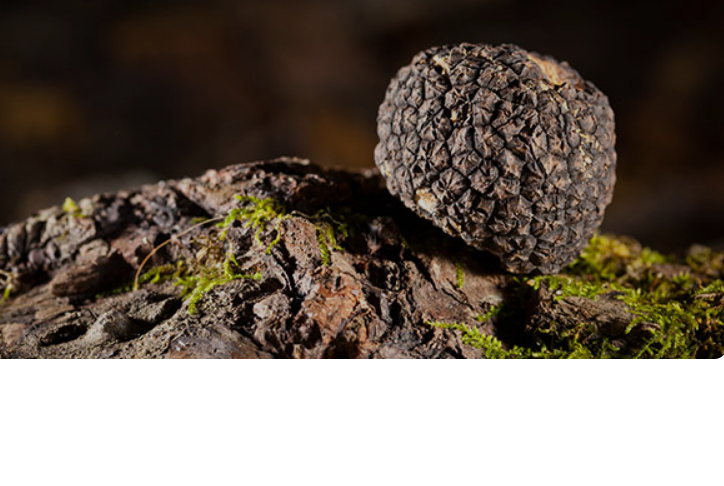The Enigmatic Truffle Fungus: Exploring its Value, Uses, and Growth in the US

Truffle fungus has long captivated the culinary world with its unique aroma and flavor. A luxury ingredient in many gourmet dishes, truffle’s allure is often coupled with questions about its origin, uses, and high price tag. Dive deep into the enigma of truffle fungus as we explore why truffle mushroom is expensive, its diverse applications, and its intriguing place in the fungi kingdom.
Also Read:- Celtic Salt in 2023: The Natural Choice for Health and Flavor
What is a Truffle?
Truffle is a type of underground fungi that belongs to the Tuber genus. Growing in symbiosis with tree roots, they are often concealed below the soil’s surface, making them challenging to find. This elusive nature, paired with their incredible flavor and aroma, makes truffles a coveted culinary treasure.
Is a Truffle a Mushroom or a Fungus?
Mushrooms and truffles are both fungi. But while all mushrooms are fungi, not all fungi are mushrooms. This distinction often confuses people. To clarify, mushrooms are the fruiting bodies of certain fungi that grow above the ground or on their food source. Truffles, on the other hand, grow underground and are also fruiting bodies of fungi, but they belong to a specific genus called Tuber. In simple terms, while mushrooms pop up above the ground, truffles stay hidden beneath, making them a type of subterranean fungus.
Why Truffle Mushroom is Expensive?
- Scarce and Difficult to Find: Truffles grow naturally in the wild and cannot be cultivated as easily as other mushrooms. Their growth depends on specific conditions, including the right kind of tree roots, appropriate soil pH, and certain climate conditions. Furthermore, they grow underground, which means you can’t spot them easily. Historically, pigs and, more recently, trained dogs are used to sniff out truffles, but it remains a time-consuming and uncertain endeavor.
- Short Shelf Life: Once harvested, truffles don’t last long. Their aroma and flavor can diminish within a week, which adds to the urgency of selling and consuming them quickly.
- Labor Intensive: The truffle hunting process requires a skilled harvester and often a well-trained animal. This means that there’s a lot of effort and expertise involved in bringing truffles from the ground to the gourmet’s plate.
What is Truffle Fungus Used For?
Beyond the kitchen, truffle has a rich history of uses:
- Culinary Delight: This is the most popular use. Truffles are shaved over pasta, risotto, and even pizza, releasing their strong aroma that elevates the dish.
- Infused Products: Truffle oil, salts, and butters are available for those who want a hint of truffle flavor in their dishes. Though it’s essential to note that many truffle oils are synthetically flavored and don’t contain real truffles.
- Medicinal Uses: Historically, truffles were believed to possess therapeutic properties, from being an aphrodisiac to treating diseases. While these claims need scientific backing, truffles are rich in antioxidants and beneficial compounds.
Where Do Truffles Grow in the US?
While Europe, especially France and Italy, is renowned for its truffles, the US also hosts regions suitable for truffle growth:
- Pacific Northwest: Oregon, in particular, has a growing truffle industry, with native truffles found in its Douglas-fir forests.
- North Carolina: The state’s climate and soil conditions are conducive to growing the prized Périgord truffle, a native of Europe.
- California: The state boasts multiple truffle varieties, although the industry here is still in its nascent stages compared to Oregon.
In conclusion, truffle fungus, with its deep-rooted history and unparalleled flavor, stands out as a unique gift from nature. Whether you’re indulging in a truffle-infused dish or just curious about its origin, it’s a topic worth exploring, revealing nature’s mysteries and the lengths humans will go to for a taste of luxury.
Frequently Asked Questions (FAQs) about truffle fungus:
1. What does a truffle taste like?
Truffles have a unique flavor that is hard to describe. Some people find them earthy, nutty, and slightly garlicky, while others detect hints of musk or fermented notes. The taste can vary depending on the type of truffle and its maturity.
2. Are there different varieties of truffles?
Yes, there are several varieties. The most renowned are the White Truffle (Tuber magnatum) from Italy and the Black Périgord Truffle (Tuber melanosporum) from France. However, there are many other species found worldwide.
3. Why are truffles so prized in gourmet cooking?
Truffles have an intense aroma that can elevate the simplest dishes. Their rarity, unique taste, and the labor-intensive process of finding them make them a luxury item in the culinary world.
4. Can I grow truffles in my backyard?
Truffle cultivation requires very specific conditions, including the right soil composition, trees to form symbiotic relationships with, and proper climate. While it’s possible, it’s a complex process and can take years before any truffles are produced.
5. How should I store fresh truffles?
Store fresh truffles in a paper towel inside an airtight container in the refrigerator. This method helps absorb excess moisture and keeps the truffle fresh. It’s recommended to consume them within a week of purchase for the best flavor.








